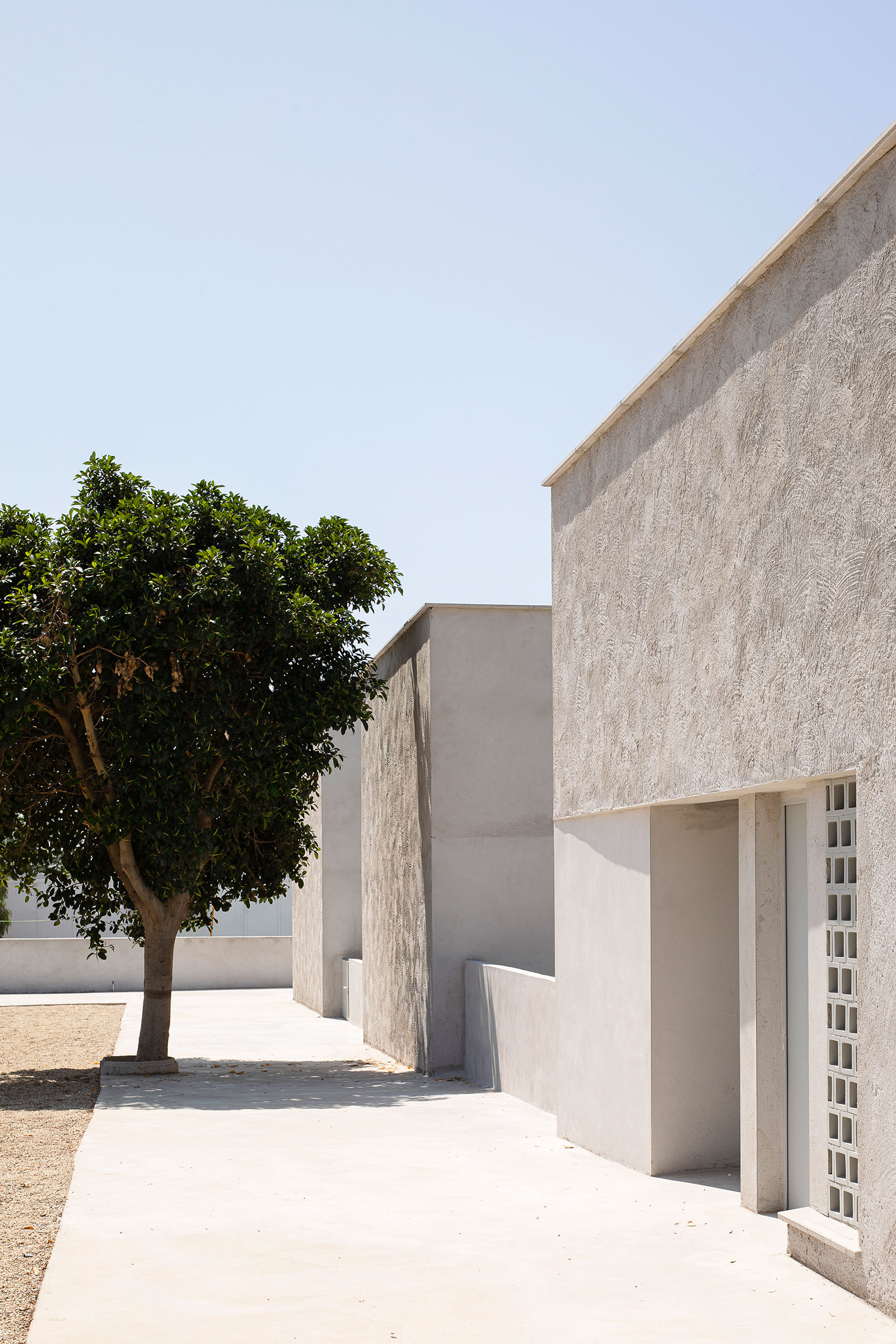PALENZVELA has sought dialogue between the existing elements and the expansion, maintaining a classroom divided into two parts and the original trees. The internal spaces are articulated through a central corridor, illuminated with a glass upper strip, from which large opposing classrooms emerge that are formalized with two different facades depending on their orientation. The southwest façade has a lintel that protects the classrooms from sunlight while the southeast façade has a comb organization that generates a sequence of classrooms and patios.
As for materiality, the corridor is covered with a tiling of enameled ceramic tiles, reminiscent of the sea of Almería in turquoise tones, located both in the interior space and on the façade surface that surrounds the circulations. In this way, a contrast is generated with the sobriety of the smooth and rough unpainted plaster that covers the volumes that house the classrooms, recalling, in turn, the traditional local construction and the semi-desert landscape of the environment.

School "Europa" by PALENZVELA. Photograph by Fernando Alda.
Description of project by PALENZVELA
The new school "Europa" in Almería is an extension of a very prestigious school. The idea is to free up space in the original building which was a P.U.A. (Plan de Urgencias de Andalucía for very popular educational centres in the 70's, characterised by its rhomboidal floor plan) and thus separate primary education in the original building and infant education in this new extension.
Therefore, the new construction is situated within the recreational spaces and courtyards of the center, interacting with its pre-existing elements, including a small classroom building composed of two classrooms and the preserved trees integrated into the architecture. The intervention is carried out with volumetric compactness and cost-effectiveness, responding to a demanding program of uses and budget constraints. Spaces are organized around a central axis, a corridor that, like a spine, connects the classrooms in two opposing orientations, giving the building two distinct profiles. The southwest orientation is marked by a large lintel designed to protect the classrooms from excessive direct sunlight, unifying and emphasizing the overall horizontal aspect. In contrast, the northeast orientation adopts a comb-like configuration, where the classrooms face south through the composition of preschool courtyards defined by the central spine.The classroom spaces are open-plan and always connected by means of fenêtre en longueur openings facing exclusively south, with solar protection by means of adjustable louvres and sunshades. The circulatory axis provides visual and lighting continuity with the classrooms by means of large, continuous upper glazed strips. The axis or spine acquires a ceramic materiality, by means of a tiling of glazed tiles of small format 15x15 cms in turquoise tones, in a clear allusion to the maritime reference of Almeria.

School "Europa" by PALENZVELA. Photograph by Fernando Alda.
The spaces designated for classrooms are open and always interconnected through openings resembling Le Corbusier's fenêtre en longueur, oriented exclusively towards the south, with solar protection provided by adjustable louvers and overhangs. The circulation axis allows visual and light continuity with the classrooms through large and continuous upper glazed strips. The axis or spine takes on a ceramic materiality, using glazed tile cladding in a small 15x15 cm format in turquoise tones, a clear reference to the maritime character of Almería. This materiality is also evident on the exterior, where the communication component differs from the classrooms. A silver color palette is adopted for the classrooms, creating a gentler reflection of the strong and warm Almerian sunlight, in contrast to the vibrant and quasi-aquatic perception of sunlight passing through the ceramic louvers of the central spine.
The exterior appearance will be characterized by the austerity and sobriety of the volumes forming the classrooms, which are executed in an unpainted plaster, in their original color with stone and earthy tones, worked in various textures, some smooth and others rough. The execution of these surfaces recalls the artisanal tradition of local Mediterranean plasters, adopting fan or striped structures to impart a certain brutalist expressiveness to the blind facades, linking with the aridity and harshness of the surrounding semi-desert landscape.

















































